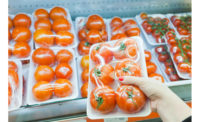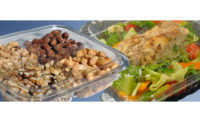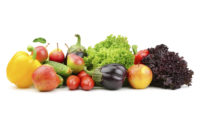Different packaging options can make an enormous difference to the bottom line, both through manufacturing costs and influencing a customer’s point-of-sale decision. Klöckner Pentaplast, a Gordonsville, Va.-based manufacturer of forming films, worked with Package InSight, LLC, Clemson, S.C., to examine the effects of different substrates on cheese, specifically a rigid thermoformed package and a flexible cheese 4-sided pouch. The study was conducted in CUshop at Clemson University, Clemson, S.C., a research lab with space to customize immersive shopping environments.
To accomplish this study, 116 participants wore eye-tracking glasses within a retail laboratory while shopping for products on a provided list for three days. During this process, participants’ eye movements were recorded and used to corroborate the results and provide insights on why participants purchased the item they did.
Analysis for both cheese packages was completed for the shopping list results and eye movements from each participant and in aggregate. Participants also completed two surveys for demographic inquiry and qualitative product measurement.
Eye-tracking results found that rigid thermoformed packaging was viewed faster and longer than flexible plastic packaging. Qualitative data confirmed this discovery by revealing that participants rated the cheese in the thermoformed package to be of higher quality, easier to open and more hygienic. These quantitative and qualitative data points correlate with the participants’ decision-making, where the thermoformed package had the highest purchase rate by consumers.
Eye-tracking
A pair of mobile eye-tracking glasses, similar to reading glasses, boast specialized technology to track and record a participant’s eye movement at an extremely high rate. The mobility of this technology allows the participant to move and shop naturally in the shopping environment.
Participants and demographics
116 participants (46 male, 70 female) participated in the study. Participants were recruited from Package Insight’s participant index. Participant’s ages ranged from 18 to over 65, with 78% between the ages of 21 and 49.
Participants had an evenly distributed income, with about half falling in the $50,000-149,999 income brackets, and 64% of all participants were the primary shopper for their household (another 27% were sometimes the primary shopper). Educational levels varied with most participants having completed at least a bachelor degree.
Experimental design and procedure
Once calibrated to the eye-tracking glasses, participants were given a shopping list and instructed to go into the store and select a product for each item on the list. The prompt for this study was “Sharp Cheddar Cheese.” The shopping list order was randomized to force participants to approach the shelves in different patterns.
Participants were instructed not to pick up any products, but only to write down the number corresponding to their preferred product choice on their checklist.
Metrics
The research team examined three primary metrics (purchase decision, total fixation duration and time to first fixation) in addition to qualitative measures recorded by the questionnaire. Further, the team developed heat maps and scan paths as data visualizations. The metric results and visualizations outline the following:
Purchase decisions—how many participants chose to buy the item. Purchase decision results show a strong preference for thermoformed-type packages over flexible pouches.
Product packages tested—Sharp cheddar cheese slices – plastic thermoformed and plastic flexible pouch.After selecting a product for each item on the shopping list and exiting the shop, participants were guided to a de-briefing area where they answered a short post-experiment questionnaire that collected qualitative information regarding the packages they viewed.
Eye movement analysis—total fixation duration, the time, in seconds, spent on average by participants fixating on this item.Fixation duration is typically one of the most important metrics for a consumer study, and this report found a strong correlation between product selection and fixation duration. That is, as a consumer’s fixation duration increased, so did their chance of purchasing the item fixated. There was also a positive correlation between product selection and fixation count.
Eye movement analysis—time to first fixation, the time, in seconds, from when a product first enters a participant’s field of view. First fixation helps us understand what packaging jumps off the shelf catching the participant’s eye. The study shows a significantly shorter time to first fixation for thermoformed packages—participants found it almost a second faster.
Eye movement analysis –heat maps. Results of the eye-tracking experiment can be visualized in aggregate via heat maps. A heat map shows where most participants looked by visualizing ‘heat’ in that area. The redder the area, the more fixations that area received respective to its surroundings.
Eye movement analysis –scan paths. In addition to aggregate visualization, individual patterns can be observed. A representative scan path of an individual shows the dominance of the thermoformed package. The sequence of fixations is outlined by the number of dots, and the diameter of the dot is proportional to the length of fixation (i.e., larger dots indicate a participant fixated on a point for a longer period).
Relevant findings
This experiment resulted in a strong core finding with supporting statistics:
• Thermoformed cheese packaging was found to be more appealing, was viewed longer and found faster than flexible plastic packaging.
• 24% longer fixation duration.
• 42% more fixations.
• 42% less time to first fixation.
• 44% more purchases.
Following the in-store eye-tracking study, participants completed a post-survey. Results revealed the following perceptions of thermoformed vs. pouch cheese packaging:
• 65.5% perceived cheese packaged in a thermoformed package to be a higher quality.
• 75% agreed that thermoformed cheese packages were perceived as easier to open.
• 56% perceived the thermoformed cheese package as being more hygienic.
This data, when combined with the above relevant findings, makes for compelling argument for why rigid thermoformed cheese packages are preferred over flexible pouches.





